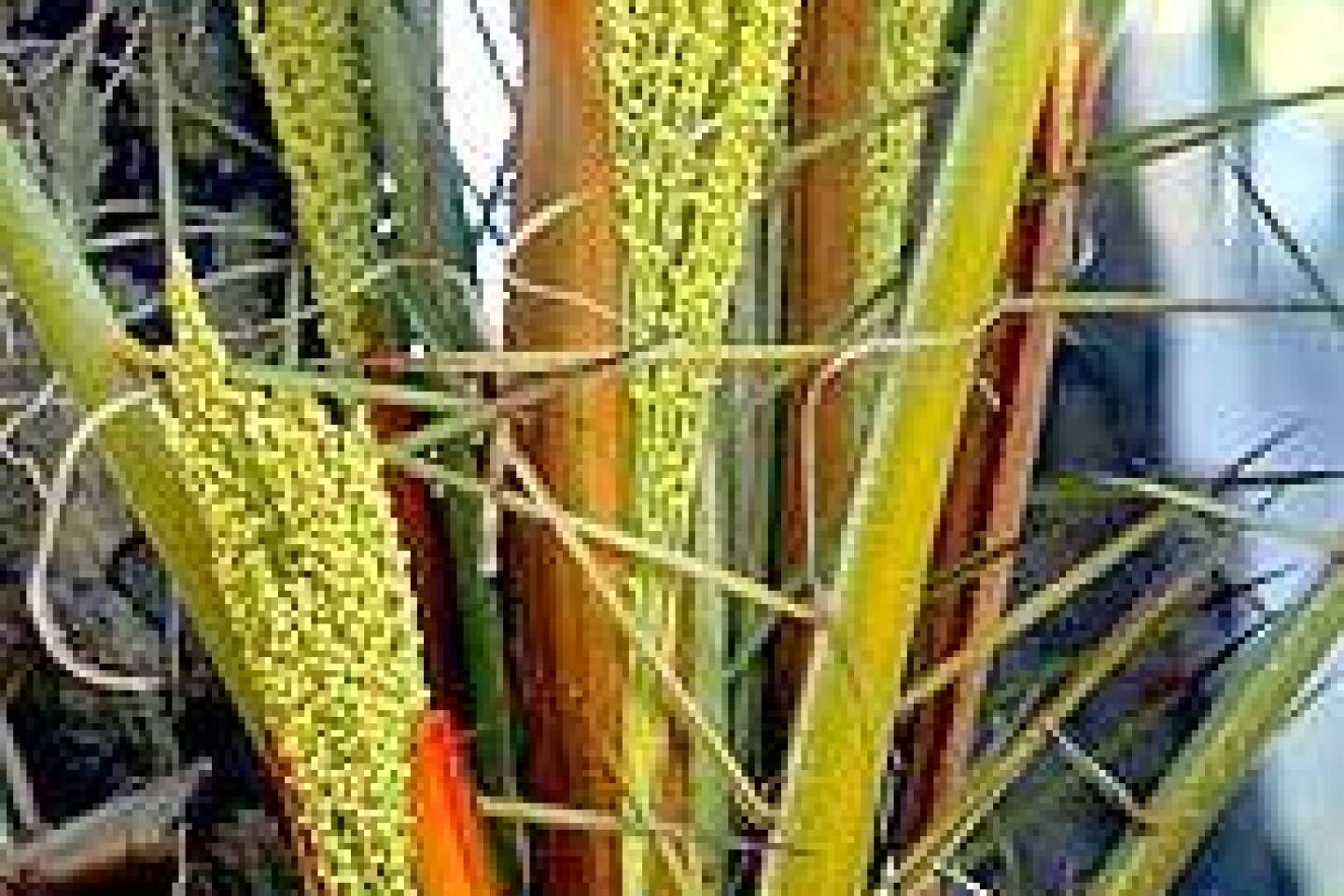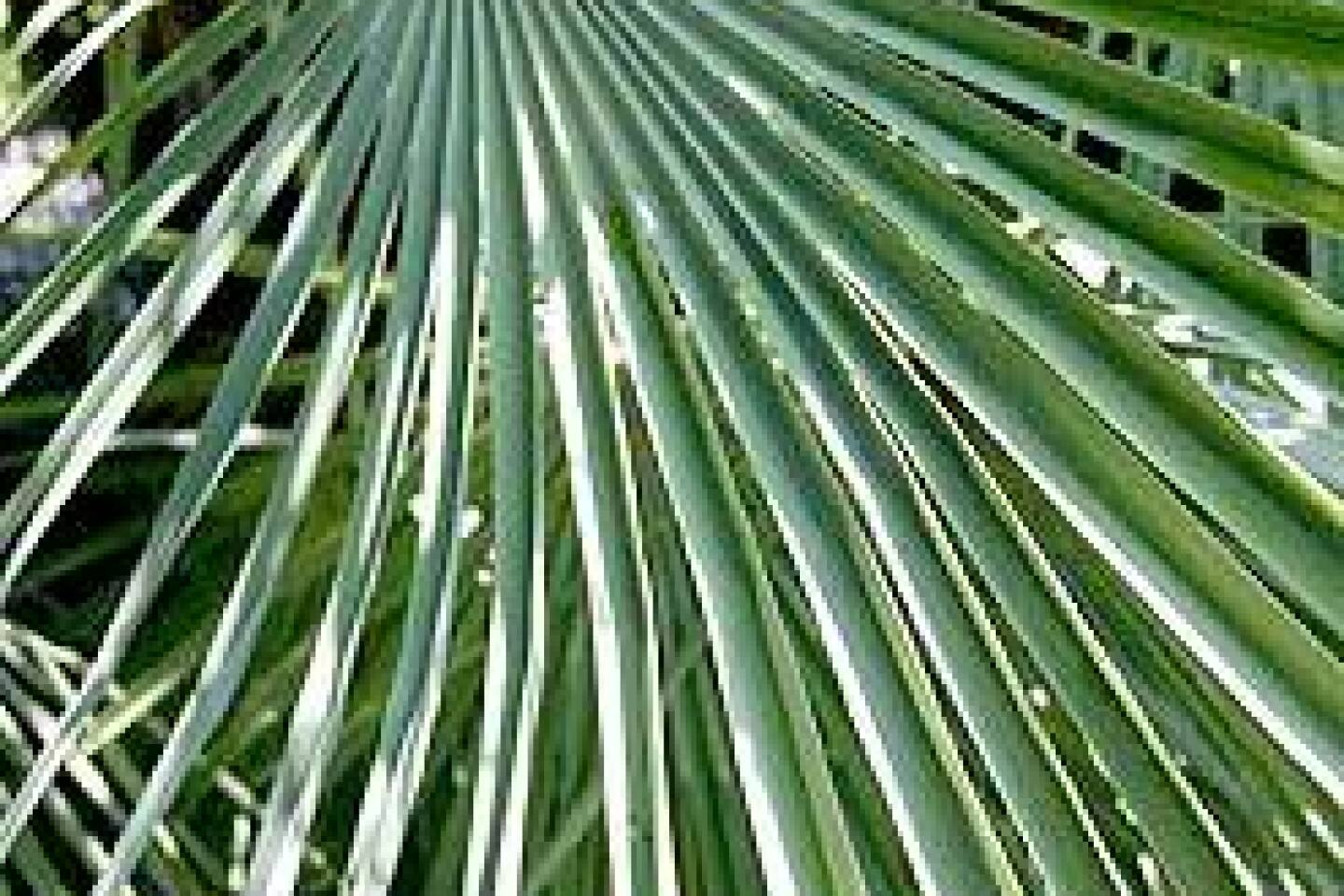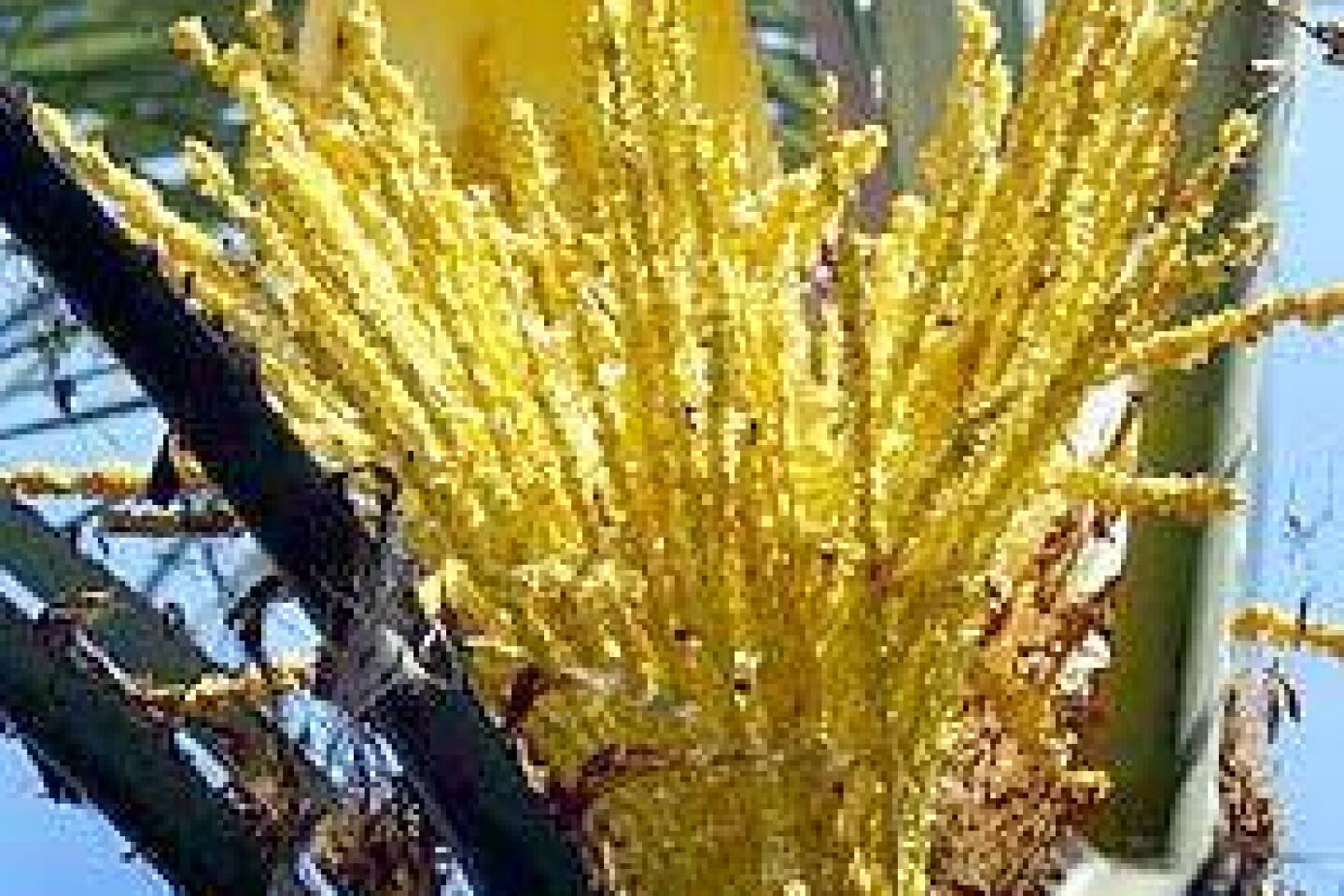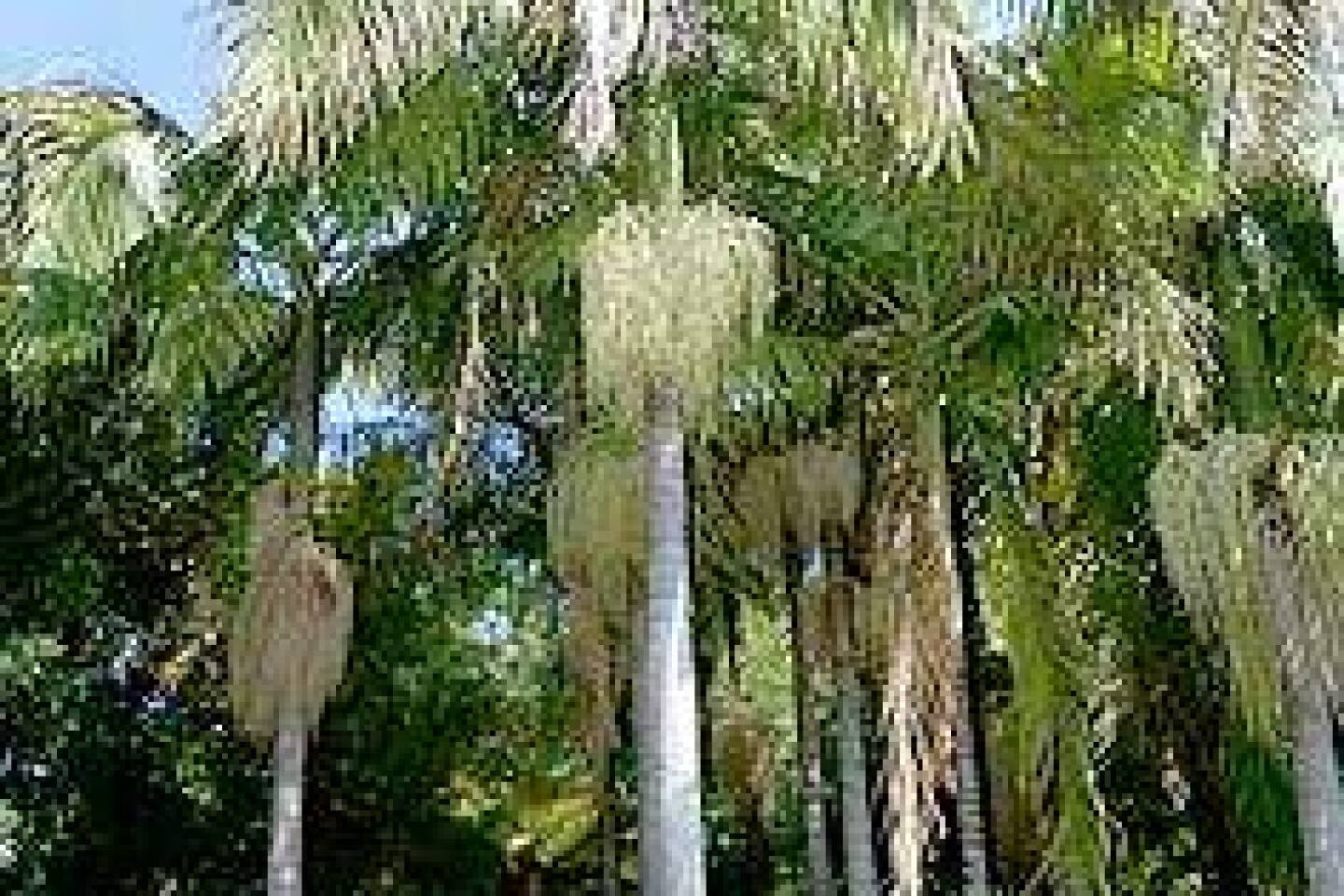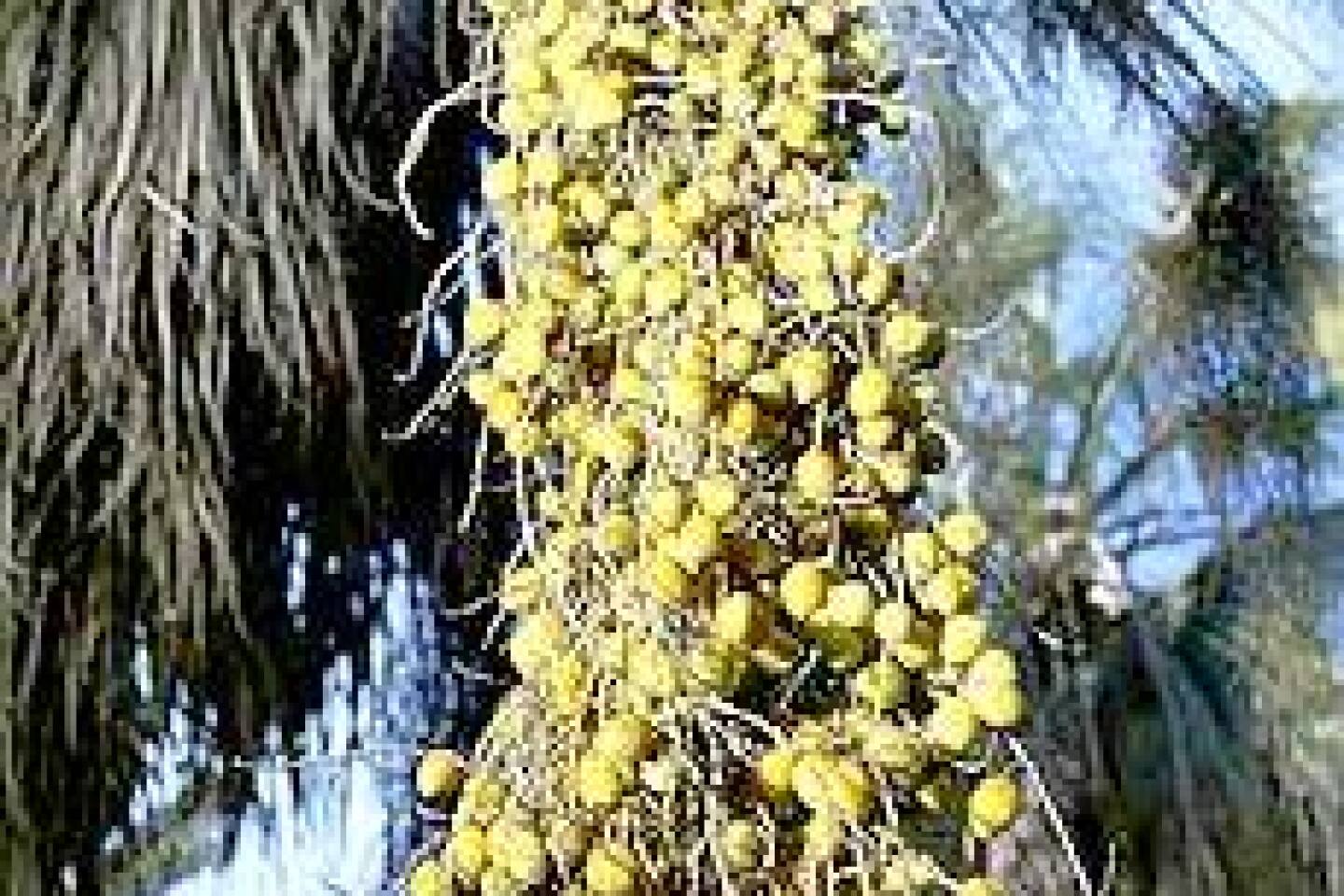Palms in Twilight
In most cities, buildings make the skyline. Paris has a tower, London a clock, New York an island-long roof-scape. Only Los Angeles signed the sky with trees. Tens of thousands of palms tower over the city like flagpoles, their arching trunks and rustling fronds marking the progression of the California dream.
It takes a circling eagle to do a better job catching the last rays of a Western sunset. The crowns of the palms of Los Angeles are still bathed with gold a good half-hour after the streets below are dark. At dusk, no tree, no structure, no animal can match their blithe grace.
Yet as boomtown comes of age, these skydusters are nearing the ends of their natural lives. Few of the urban foresters responsible for their care think that 100 years hence, our skyline will have the same fluttering brio.
Why? Palm buyers for Vegas casinos have driven the market for young specimen trees beyond the reach of the municipal purses. L.A. needs more broad-canopied shade trees to fight a resurgence of air pollution. Trimmers prefer shorter trees. Falling fronds. Disease.
Yet look at new planting and all is not lost. We may be living in the twilight of the palmiest days of Los Angeles, but the city’s leading landscapers and arborists are intent on ensuring a future for Southern California’s trademark trees.
Like us, palm trees are imports, and seem to come from everywhere but here. Spanish Franciscan and Jesuit missionaries brought the first date palms to California in 1769. A fruit industry built on seedlings from Algeria, Egypt and Iraq followed in the Coachella Valley in the early 1900s.
The story of the earliest street palms is a fronded version of the Johnny Appleseed legend. Characters who passed through the Californian and Sonoran deserts began planting fan palms along orange groves and farm drives. At the beaches, Mexican palms fared better in the damp of coastal night fogs.
From the 1880s onward, they became breezy emblems of the property boom. Developer Lucky Baldwin, the legendary seducer and man famous for saying, “Hell, we’re giving away the land. We’re selling the climate,” surrounded the Queen Anne cottage of his Arcadia estate with fan palms, leaving behind what are now some of the oldest specimens in the city.
By the turn of the last century, Southern California had specialized palm nurseries and in 1905, the railway entrepreneur Henry Huntington started an exotic palm collection on his San Marino estate. Craftsman builders were putting fan palms by every hitching post throughout Pasadena, the Adams district, Venice and Santa Monica. In a sweeping beautification effort leading up to the 1932 Olympics, the Crenshaw district was covered with palms.
Soon there were palms and palms. Between 1910 and 1930, the hoi polloi of the Adams district, Santa Monica, Hancock Park and Beverly Hills increasingly upgraded from Mexican fan palms to make the mighty, diamond-trunked, thickly crowned Canary Island date palm the symbol of affluence. Later, modern postwar suburban subdivisions took to lacier, bright green king and queen palms.
Throughout the euphoria, nobody predicted the palmy irrepressibility of the city’s 21st century skyline. In the wild, California and Mexican fan palms grow from 40 to 60 feet tall, says Don Hodel, horticulture advisor for the University of California system and author of “Exceptional Trees of Los Angeles” (California Arboretum Foundation). By contrast, their city cousins have spired to between 100 and 150 feet tall.
The varying height was often accidental. Early city planners used seedlings of Mexican and California fan palms interchangeably. They couldn’t tell the difference. A century later, this has become clear. A planting scheme intended to bring order and symmetry to the heart of Los Angeles has achieved a bobbing lyricism instead — allées in which rows of runaway tall and skinny thin-stemmed Mexican palms suddenly give way to stockier, shorter California ones.
It seems incredible that these trees so rarely come down in storms. Not only are palms well anchored by discreet, tenacious roots, few plants are as aerodynamic as palms, explains Hodel. The air slips around them rather than creating the parachute effect of canopied trees.
Fronds, however, do fall. This happens after tree trimmers begin to skin away dead leaves. When the old fronds are left on the trees to form petticoats, they rarely fall. Trim them away and Santa Anas can send untrimmed dead leaves flying.
From street level, unless you look up, way up, often the trunk of the old Mexican fan palms is all that’s visible. The way its trunk is trimmed can make it look like two different plants. Palms with cross thatching on the trunk still bear the stems. Skinned palms look more like elephant legs.
The outer tissue is more sensitive than trees with bark (resist hammering signs for garage sales into them), but because it’s alive, it’s strong. So strong. Unlike stiff and woody trees, palm trunks are fibrous. Hodel compares palm wood to the cable in a suspension bridge, with its unique mix of flex and strength. The suppleness can border on the freakish. At the Arboretum of Los Angeles County, old Mexican fan palms planted by Baldwin creep 20 feet across the ground before turning skyward and shooting 120 feet in the air. In Santa Monica, from 4th Street, you can see street after street of Mexican fan palms growing into the wind, to balance themselves.
Early plantings of Los Angeles street trees were done with nursery seedlings. However, modern developers soon began to require more mature specimens. The single quality that kept the palm vogue alive decade after decade was the ease with which mature palms could be transplanted, giving newly minted developments instant landscaping. When date palms were chosen for Santa Anita Park and the Vegas strip, transplants were moved by the truckload out of old Coachella orchards.
Tadd Russikoff, vice president of the 55-year-old Calabasas-based tree movers Valley Crest, reckons his company moves thousands of palms a year. Distances vary — from the back to the front of a house or, once, a vast procession of Canary Island date palms sent north to San Francisco for the Embarcadero project.
It has not been a victimless boom. “Vegas has priced just about every municipality out of the market,” says George Gonzalez, chief forester for the city of Los Angeles. Demand from casinos has forced prices for Canary Island date palms to $350 to $500 per foot of trunk, never mind craning, trucking and planting. Across the palm market, including installation, a 15-foot Canary Island date palm might cost $7,500, a date palm $3,500, a queen palm $1,500, a Mexican fan palm $1,000. To start with trees of decent size, city tree buyers have been turning to oaks, jacarandas and ficus saplings, with price tags in the hundreds, not thousands.
On top of spiraling costs, disease has slowed palm planting, says Ken Pfalzgraf, urban forest supervisor for the city of Beverly Hills. Nothing brings a tear to a palm lover’s eye as quickly as the effects over the last 10 years of fusarium wilt, a fungus that has killed an estimated 400 of Beverly Hills’ mighty Canary Island date palms, leaving an estimated 1,100 standing.
Pfalzgraf put out the word that the fungus, which is endemic to L.A. soil, was possibly being transmitted by the unclean saws of tree trimmers. City to city, new protocols were written for arborists. In the process, city pruners have looked at palms afresh.
Before fusarium, many municipal pruners used to take to the trees with chain saws, and routinely tear into live wood, says Walter Warriner, community forester for the city of Santa Monica. To prolong intervals between trimming, it was standard practice to cut crowns to feather duster shapes, or even “pineapple” them to as few as three fronds. To illustrate the impact, he asks: “Ever look at a palm and it has a constricted point in the trunk? That is a telltale sign that the tree was over-pruned. It only regains its full girth when the canopy regains normal size.”
The new Santa Monica protocols dictate that trimmers should use handsaws, not chain saws; saws should be cleaned with 50% bleach solution after each tree and little or no green foliage should be cut.
Reforms appear to have slowed the spread of fusarium. However, Gonzalez worries that private tree trimmers are still using discredited methods and asks homeowners to be sure to only use licensed arborists and to check their methods before they start work.
Our palms may not be native, but a frond-studded horizon still means only one place: Los Angeles. Santa Monica has 6,000 palms, Beverly Hills 3,300, Los Angeles 75,000 — on city property alone. Most of these are Mexican fan palms, the standard-issue street tree.
The good news is that they’re not diseased, says Gonzalez. They’re tough. The bad news is that they’re old. Most are between 75 and 100 years old, and nearing what he guesses is the end of their natural lives. He’s not sure how long they have. “Palms seem to go one at a time,” he says.
Will our skyscape look the same 100 years from now?
“No,” he says. “There will be palms, but not as many.” They are replanting when they can find affordable stock, but times have changed. Paradise is polluted. The new need is for broad-canopy trees that help counterbalance auto emissions.
Yet the importance of planting more palms is not lost on landscape designers. Vegas may have raided the orchards of Coachella to line its new strip, but a stand of date palms, the most emblematic plant of the Holy Land, also went inside the walls of L.A.’s new cathedral.
When choosing trees to line Grand Avenue opposite the Walt Disney Concert Hall, landscape architect Nancy Goslee Power used the commonest of all street trees, the Mexican fan palm. To her mind, it had the grace, the elan, and, most important, the resonance needed for such a heroic situation.
“They’re ours,” she says. “They’re California.”
Myron Kimnach, curator emeritus of the palm collection of the Huntington Library, Art Collections and Botanical Gardens; Timothy Phillips, superintendent of the Los Angeles County Arboretum & Botanic Garden; Warren Davis, superintendent of the UC Davis Arboretum; Kevin Starr, state librarian emeritus; and Leland Lai, Los Angeles area chair of the Palm Society of Southern California, all assisted with the research for this article.
*
(BEGIN TEXT OF INFOBOX)
Sources for palm fanciers
Recommended reading: “Palms for Southern California” ($10), the International Palm Society Bookstore, Care of 15615 Boulder Ridge Lane, Poway, CA 92064. Call (858) 513-4199 or e-mail randal.moore@cox.net. Also, “An Encyclopedia of Cultivated Palms” by Robert Lee Riffle and Paul Craft (Timber Press, $49.95).
Organizations: Palm Society of Southern California offers a monthly journal, listings of specialist nurseries and growing tips for California’s various microclimates. Call (858) 513-4199 or go to https://www.palmsocietyca.com .
Palm gardens: Lucky Baldwin’s original palm garden is at the Los Angeles County Arboretum & Botanic Garden, 301 N. Baldwin Ave., Arcadia. Call (626) 821-3222. Henry Huntington’s is at the Huntington Library, Art Collections and Botanical Gardens, 1151 Oxford Road, San Marino. Call (626) 405-2100.
*
(BEGIN TEXT OF INFOBOX)
Six that reach for the skies
There are more than 3,000 known species of palm in the world, but most of them are tropical. Here is a selection that can thrive in our Mediterranean climate.
MEDITERRANEAN FAN PALM [CHAMAEROPS HUMILIS]
Only palm native to Europe. Unlike flagpole American palms, is multi-trunked, low growing and stays low, forming an attractive thicket. The upshot: It is ideal for a residential lot. Dusky green compatible with native plant palette. Once common in wild around the Mediterranean, but were collected by landowners and moved into villas. Needs water until established, then drought tolerant.
JELLY PALMS
[BUTIA CAPITATA]
Need a plant for a Spanish bungalow that won’t outgrow the house? Landscaper Nancy Goslee Power recommends these South American palms — Butia capitata or Butia paraguayensis — with attractive thatched trunk, gray-green foliage, edible fruit. Slow growing, drought tolerant once established. From 6 feet to 20 feet. For greener foliage, try the frilly Australian foxtail palm, Wodyetia bifurcata.
STREET PALMS[WASHINGTONIA FILIFERA]
The tall and taller street palms are Mexican and California fan palms, Washingtonia robusta and Washingtonia filifera, respectively. For a home garden, a smaller alternative is the Guadalupe palm (Brahea edulis), with a mature height of 30 feet. Water until established, then drought tolerant. Best stands around town in Chavez Ravine, Rosedale Cemetery, the Arboretum and farm lanes of old Pasadena.
DATE PALMS
[PHOENIX DACTYLIFERA]
Aristocrats of not just palms, but all plants. Phoenix dactyliferas are the fruit trees of the Bible, P. canariensis the sentinels of our broadways and stand watch on the bluffs of Santa Monica, P. reclinatas the spiny bouquets good for large planters. Fruit doesn’t ripen without desert heat, but parrots like it. Fast growing, drought tolerant once established. Dactyliferas and canariensis to 80 feet, reclinatas to 30 feet.
MEXICAN BLUE PALM [BRAHEA ARMATA]
Baja native with elegant blue-gray leaves, “can take some really quite serious cold,” Power says. Drought and wind tolerant, adds the Palm Society. Slightly fierce leaf bases, lavish white flowers in spring startling against blue leaves. Perfect plant for mixing with California natives. Handsome in containers, mature height 35 feet, slow grower. Water until established. See mature ones in Balboa Park in San Diego.
KING PALM
[ARCHONTOPHOENIX CUNNINGHAMIANA]
Australian import; can be artfully mixed with Kentia palms (Howea forsteriana). Both have bright green, tropical good looks, feathery or pinnate leaves, medium water needs. Fast grower to 60 feet. Planted at the Huntington gardens with agapanthus. Smooth green beneath leaves; “crown-shaft” indicates the palm sheds dead foliage. The flowers form a lush summer necklace.
Sign up for The Wild
We’ll help you find the best places to hike, bike and run, as well as the perfect silent spots for meditation and yoga.
You may occasionally receive promotional content from the Los Angeles Times.
